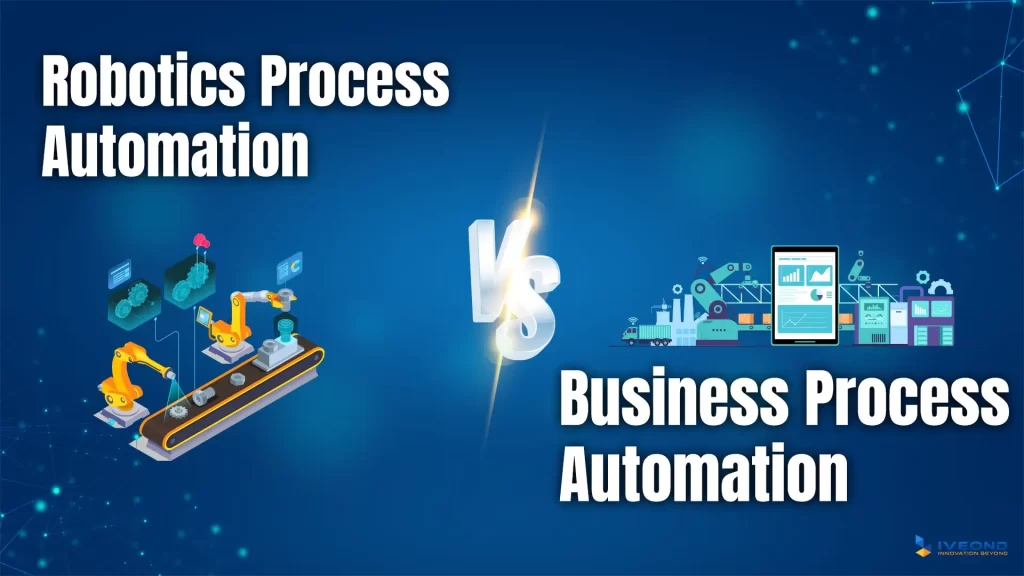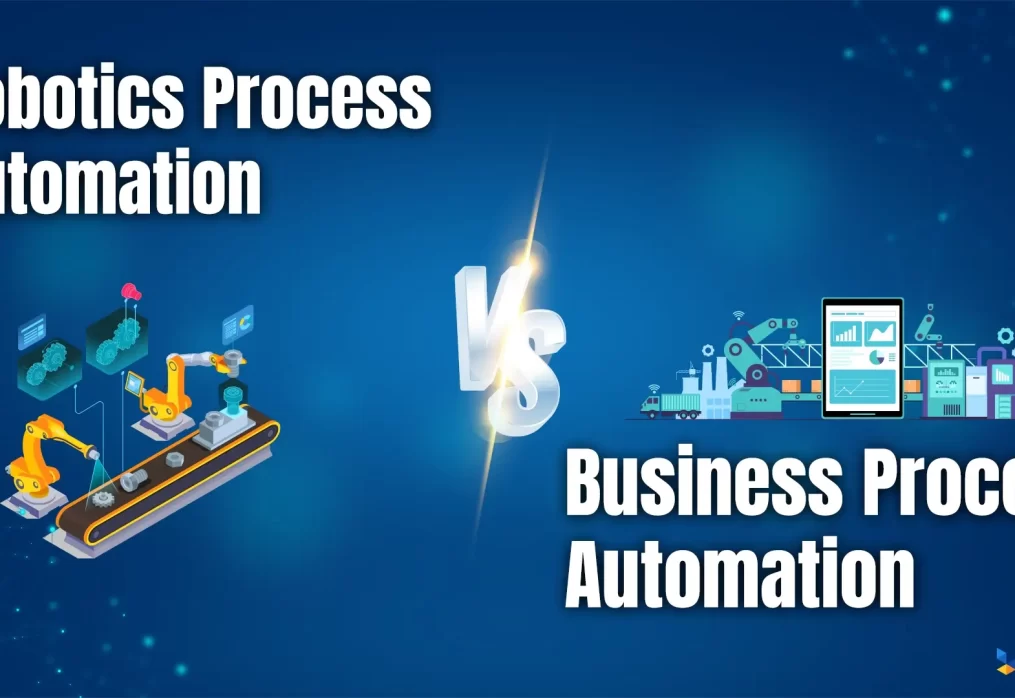Robotics Process Automation(RPA) vs Business Process Automation(BPA)
Robotics Process Automation(RPA) vs Business Process Automation(BPA)
Robotics Process Automation and Business Process Automation are well-known approaches companies are looking to boost efficiency across their businesses and optimize processes. These technologies are aimed at enhancing the speed, accuracy, and effectiveness of their processes. In this article, we will discuss about automation technology: RPA (Robotics ProcessAutomation) and BPA (Business Process Automation) and how they differ from each other.

What is RPA (Robotics Process Automation)? Robotic process automation defines the use of software to automate one or more business techniques utilizing software robotic teams to connect with and manipulate software. RPA software robotic teams are automated to perform similar tasks that humans would do in a predefined UI (user interface). They are intended to follow a predefined group of instructions and generally repeat these activities at scale. Robotic process automation is frequently used in back-end operations and can be used in various industries and business functions. RPA can be used for several computer tasks to accelerate speed and efficiency. There are several use cases in RPA, like site scraping, finance processing, record generation, underwriting loans, claims processing, enrollment renewals, order processing, and delivery notifications.
What is BPA (Business Process Automation)? Business process automation (BPA) is utilizing software to automatically implement repeated tasks related to a company’s essential techniques. You can use BPA to integrate and optimize procedures from sales and marketing to HR, adherence, training, and beyond. BPA is the use of automation to simplify routine, daily tasks. It accelerates how the job is being performed by conveying the proper detail to the appropriate person at a suitable time through user-defined rules and activities. With automated systems, organizations save time and keep up with that better practices adopted to increase the entire working process. BPA helps the workforce meet different enterprise requirements according to its objectives and industry demands.
Robotics Process Automation vs. Business Process Automation RPA and BPA are both automation technology’s objectives at transferring work from humans to computers, but a few differences that should be kept in mind. BPA was primarily introduced to the technology industry and can execute RPA within its system. Now Let us understand the differences between RPA and Traditional Automation which are as follows:
Robotics Process Automation:
- It can be used within current processes.
- It uses pre-existing user interfaces to connect with an application like a desktop application, mimicking the activities of a human user.
- It gives efficiencies and cost savings without re-designing projects or complete processes.
- It uses low-code or no-code features to allow clients to become citizen engineers.
- RPA helps in removing the tasks which robots would consequently implement.
- RPA does not follow an end-to-end technique and can work together with different software, like BPA.
Business Process Automation:
- It can enhance client experience through automation.
- It needed integration, API access, and database access for data exchange across internal and external frameworks.
- It is used to optimize current processes needed for analysis and re designing.
- It needed a business engagement structure including a Center of Excellence that targets optimizing end-to-end UX.
- BPA assists in determining the solution, beginning from the base and then changing upwards towards the problem.
- BPA follows an end-to-end technique and cannot be joined with different software.

